
All categories
Featured selections
Trade Assurance
Buyer Central
Help Center
Get the app
Become a supplier

(60 products available)
















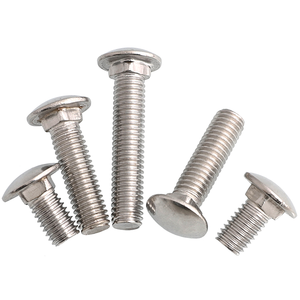



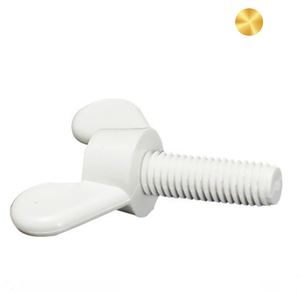



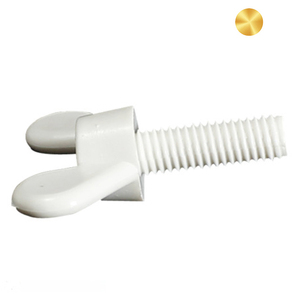
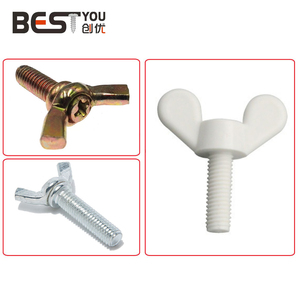

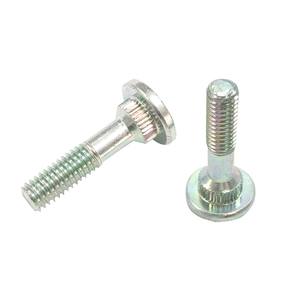









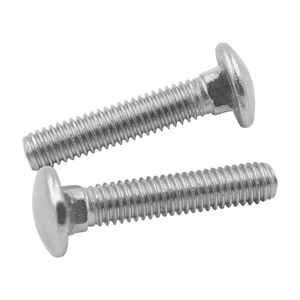
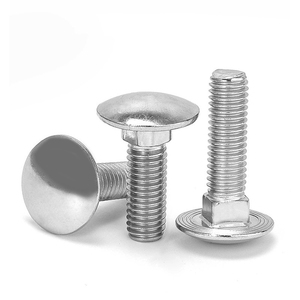



Knurl neck bolts are popular fasteners made in various types. Each type is beneficial depending on the application requirements. These types include:
Hexagonal Knurl Neck Bolts
They are usually recognized as hex neck bolts. They have a prominent hexagonal knurl pattern on the neck. It offers users a good grip during installation and uninstallation. This feature makes them commonly used in areas where the fastener needs to be adjusted frequently. Also, they are used in vibratory environments. Moreover, the hexagonal shape offers more resistance to slippage than other designs. It ensures a tight and safe connection even under heavy loads.
Round Knurl Neck Bolts
The round knurl neck bolt has a cylindrical neck with a textured knurl pattern. This texture improves the grip for better rotation. These bolts are mostly used in applications requiring moderate torque and stability. Their design helps in distributing pressure evenly. Thus, minimizing the chances of loosening due to vibration or thermal expansion.
Square Knurl Neck Bolts
Like the hexagonal type, square knurl neck bolts feature a square-shaped knurl pattern on the neck. This design offers a higher grip level than smooth necks. These fasteners are suitable for high-torque applications where slipping might be a huge concern. The square shape provides more contact points, increasing friction and resistance to rotational movement.
Diamond Knurl Neck Bolts
Diamond knurl neck bolts consist of a diamond-shaped textured pattern on the neck. It enhances the gripping ability significantly. These fasteners are highly valued in industries where users need a strong resistance to slipping. This is because the design effectively locks the nut or mating component in place. In construction machinery and heavy-duty equipment, these bolts are often used.
Cross Hatch Knurl Neck Bolts
The cross-hatch knurl neck bolts have a crisscross pattern on the neck. This is excellent for increasing grip and reducing wear. It offers a unique combination of aesthetics and functionality, making it entertainingly suitable for both industrial and consumer applications. Thus, they are highly able to provide a strong grip and a pleasant outlook.
Automotive Industry
In the automotive industry, knurl neck bolts perform unique fastening solutions essential for vehicle assembly and the maintenance process. Their textured necks provide an excellent grip. This feature minimizes the chances of loosening caused by dynamic vibrations and torque experienced during the operation.
These bolts are profoundly used in critical areas like engine components, suspension systems, and transmission assemblies. Here, reliability and safety are important. Also, their easy installation and removal come in handy when quick adjustments or replacements are occasionally needed.
Machinery and Equipment
For large-scale machinery and industrial equipment, durability is the main factor. In such cases, knurl neck bolts are very helpful in such equipment’s assembly and maintenance. Usually, they can endure heavy loads and stressful working conditions.
The unique design of their necks can resist slip-offs under vibration. As such, they are ideal in high-stress environments, for example, construction and mining machines. Thus, these fasteners ensure structural integrity and longevity in these demanding applications.
Aerospace Industry
Minimally, weight reduction without going at the expense of strength is crucial in the aerospace field. In such cases, knurl neck bolts make it possible to ensure this happens. They assist in holding down airplane frames, engines, landing gear, and composite assemblies. The textured neck enhances grip, preventing loosening from flight vibrations. This feature makes them extremely valuable in an application where reliability gets into the picture.
Electronics and Appliances
In addition, the electronics manufacturing industry employs knurl neck bolts to fasten components within devices. These incorporate their usage in home appliances, computers, and other consumer electronics. Here, the bolts help keep internal parts stable. It is very important since movements or loosening can cause the modes malfunctioning.
These fasteners give a balance of ease in installation and reliability. This is useful in production settings where efficiency and precision are required in equal measures.
Construction and Civil Engineering
Construction and civil engineering employ knurl neck bolts to provide the as-built integrity of structures designed to endure colossal forces and dynamic loads. They are the preferred choice for fastening steel beams, bridges, and buildings.
Their ability to retain torque even under extreme conditions ensures safety over time. This makes them vital in the knurl neck bolt-outdoor applications.Material Composition
Usually, knurl neck bolts are manufactured from steel, stainless steel, alloy steel, and carbon. Steel is a well-known material for these fasteners due to its ideal balance of strength and ductility. While stainless steel offers excellent corrosion resistance for outdoor and marine applications, carbon steel is noted for superior wear resistance and durability.
Knurling Patterns
So, the necks of the knurl neck bolts normally feature different knurling patterns. These patterns contain diamond, cross-hatch, hexagonal, and circular. They provide users with varying levels of grip. In most cases, harsher knurls increase friction and grip. Therefore, they are better for high-vibration environments.
Grades
Commonly, knurl neck bolts come in different grading. The grades are closely related to their tensile strength and load-bearing capacity. For example, grade 5 and 8 bolts are normally used in heavy-duty industrial applications.
Coatings and Finishes
To improve performance, knurl neck bolts typically feature various coatings and finishes. Such coatings include zinc plating, galvanization, and black oxide treatment. Zinc plating is used to provide electrochemical protection. This helps avoid rust formation on the surface of the metal. On the other hand, galvanization offers a more robust defense against corrosion in environments where ammonia is commonly found.
Size Range
Customarily, knurl neck bolts are available in a wide range of sizes, from diameter 1/4 inches to 1 inch, and lengths ranging from 1 inch to 8 inches. Standard sizes conform to the common metrics of industry standards. Therefore, these include UNC, UNF, and ISO requirements.
To install the knurl neck bolt, undertakers have to follow some outlined procedures. First, they have to gather their requirements. The requirements include the right tools and equipment. Then, they should prepare the work area and the components the bolts will hold together. After that, they must align the parts and insert the bolt. Next, they are required to tighten the nut to an appropriate torque using a torque wrench. Finally, they have to check the installation. This verifies if the bolt is properly secured.
Corrosion Prevention
Kmajorly, nut neck bolts are made of metal. Thus, they are prone to rusting when exposed to moisture. To avoid this from happening, users should apply a protective coating like paint or oil on the surface of the bolt. This acts as a barrier between the metal and air. For bolts that are used in humid or coastal areas, use stainless steel or galvanized bolts.
Regular Inspection
Frequent checks on knurl neck bolts are vital for their durability. This is because, over time, wear and tear cause these bolts to stretch, corrode, or even break. During the inspection, look out for signs of rust, elongation, visible cracks, and general wear. Check if the knurl pattern is smooth or has worn out. In addition, check neck bolts regularly. This ensures there are no safety issues or structural problems that arise from worn-out fasteners.
Tightening
Occasionally, knurl neck bolts need to be retightened. This is to ensure they maintain their hold on the structures they support. Bolts should be kept tight to the manufacturer's recommended torque specifications. Overtightening, though, causes stretching or stripping of the threads. On the flip side, under-tightened bolts can lead to loosening and decrease the carrying capacity.
Replacement
Continuous use of a knurl bolt neck may lead to the deterioration of its material properties. When this happens, users have to replace old bolts with new ones. This ensures the integrity of the as-built structure is maintained. Use like-for-like replacement whenever possible. This preserves the original as-built design.
Compatibility
The maintenance and repair of a knurl neck bolt involve a close relationship with its accompanying nut and components. Occasionally, ensure the nut and bolt remains compatible. This is because using different sizes or threads will cause uneven wear and potential failure.
Application Requirements
Consideration should be given to the expected use of the knurl neck bolt. One must assess the load, stress levels, and environmental conditions they will encounter. This helps determine the right material and coating for each application. For example, in heavy machinery, the use of strong steel or alloy bolts is a must.
Material
Mostly, these bolts are manufactured in various materials. These materials are steel, stainless steel, titanium, or carbon. Each material comes with unique advantages. For instance, stainless steel has excellent corrosion resistance. Therefore, it is ideal for outdoor or marine applications. On the other hand, titanium is lightweight with very high strength. This makes it suitable for aerospace applications.
Knurling Type
The knurling type selected also affects the bolt's performance. Different patterns like hexagonal, diamond, or cross-hatch offer varying grip levels. In this case, manufacturers should choose a pattern that ensures a secure fastening in their targeted applications. For example, heavy machinery requires a more aggressive knurl pattern to prevent slippage.
Coatings
They add an extra layer of protection to fasteners. Commonly, they help in improving the bolt’s performance and durability. The most popular coatings include zinc plating, galvanization, and black oxide. Usually, zinc plating and galvanization are recommended for outdoor uses because of their benefactor corrosion resistance. Conversely, black oxide is suitable for indoor applications where corrosion is not that much of a concern.
Size and Strength
The size of the knurl neck bolt should meet the mechanical strength requirements of the application it intends to be used in. Mostly, larger diameter bolts have higher tensile strengths. Thus, they are suitable for heavy-duty tasks. Conversely, smaller bolts perform better in light-load applications where space is limited. Therefore, selecting the right size helps avoid fastener failure as well as structural integrity.
Tensile Strength
A bolt's strength is a critical factor to consider in this case. Choose those that possess sufficient tensile strength to withstand the maximum load in their applications. Going for high-strength materials such as alloy steel will help enhance durability. In addition, to avoid costly failures, users should ensure they select bolts with the appropriate strength for their load conditions.
A.1.The main benefit of applying coatings on knurl neck bolts is the corrosion resistance they offer. It significantly improves the lifespan of these fasteners in different environments. In addition, coatings enhance the appearance of the bolt while providing a layer of protection against wear and tear. Thus, they help in ensuring consistent performance and reliability in various industrial applications.
A.2.Stainless steel is the most common material used for these bolts because of its outstanding resistance to corrosion. Ideally, this makes it ideal for outdoor and marine applications. There are also steel knurl neck bolts that offer great strength and durability. They are cost-effective. Lastly, carbon steel is popular because of its hard-wearing properties.
A.3.Knurling offers users a better grip. Thus, it is the reason why it is done on the neck of these bolts. It minimizes the chances of slipping. Consequently, it ensures a tight and secure fastening. This is particularly crucial in high-vibration applications where fasteners tend to loosen up with time. Also, it improves the ease of installation and subsequent re-adjustments.
A.4.The main difference between these bolts and normal bolts is that the former has a textured neck. This texture provides increased grip and torque. On the other hand, usual bolts have a smooth neck. Therefore, by reducing slipping, knurling enhances the fastening security in challenging environments. These conditions incorporate heavy machinery and automotive applications.
A.5.Users can maintain their knurl neck bolts by doing regular inspections. This is because it helps detect corrosion or wear-out signs early. Also, applying the right level of torque during installation helps avoid overstressing the bolts. In addition, protective coatings should be done to prevent exposure to harsh elements.